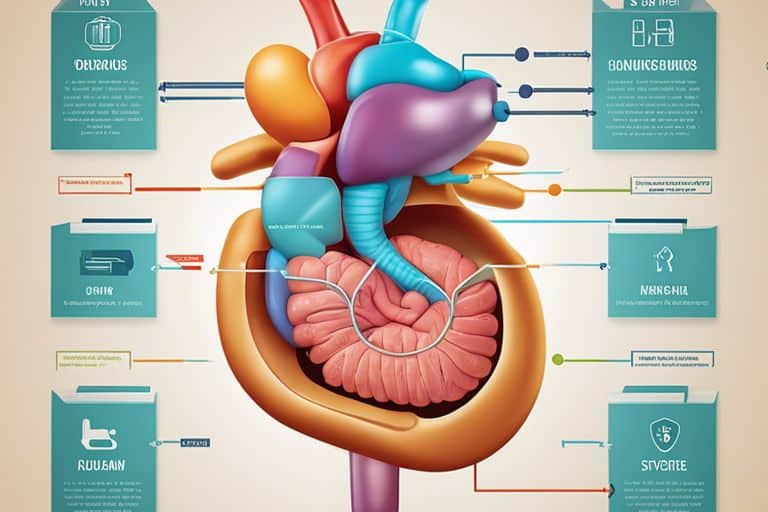With so much complex information to absorb, learning gastrointestinal anatomy can be a challenging task for many students. However, having a solid understanding of the digestive system is vital for healthcare professionals and students in medical fields. In this guide, we will provide you with effective strategies and tips to help you grasp the intricacies of gastrointestinal anatomy quickly and efficiently. Whether you are studying for an exam or looking to expand your knowledge, this informative post will help you navigate through the complexities of the digestive tract with ease.
Fundamental Concepts
Layers of the Gastrointestinal Tract
On your journey to learning gastrointestinal anatomy quickly, it is necessary to understand the layers of the gastrointestinal tract. The tract consists of four main layers: mucosa, submucosa, muscularis externa, and serosa. Each layer plays a crucial role, from absorption in the mucosa to peristalsis in the muscularis externa.
The Digestive Process
To grasp the necessarys of gastrointestinal anatomy, you need to research into the intricate process of digestion. On a basic level, digestion involves the mechanical and chemical breakdown of food in the gastrointestinal tract. This process starts in the mouth, where enzymes begin breaking down carbohydrates, then moves through the esophagus, stomach, small intestine, and large intestine.
With mechanical and chemical processes working in harmony, food is broken down into nutrients and waste products. The most important aspect to understand is the role of enzymes in breaking down macromolecules like proteins, fats, and carbohydrates into smaller molecules that can be absorbed by the body.

Learning Strategies
Visual Aids and Diagrams
Some students find that visual aids and diagrams are incredibly helpful when learning gastrointestinal anatomy. The use of labeled diagrams, 3D models, and interactive online tools can provide a clearer understanding of the complex structures within the gastrointestinal system. The visual representation helps in visualizing the location of organs, blood supply, innervation, and functions.
Mnemonics and Memory Tips
The utilization of mnemonics and memory tips can be a game-changer when it comes to mastering gastrointestinal anatomy. By creating acronyms, rhymes, or witty phrases, students can simplify complex information into easy-to-remember formats. Mnemonics help in recalling the sequence of processes, anatomical structures, and physiological functions effortlessly.
- Acronyms
- Rhymes
- Witty Phrases
After familiarizing yourself with the main gastrointestinal anatomical structures and functions, applying mnemonic devices can reinforce your memory retention and recall. Mnemonics break down vast amounts of information into digestible bits, aiding in long-term retention of crucial details.
Key Gastrointestinal Structures
Upper Gastrointestinal Tract Anatomy
Many imperative structures make up the upper gastrointestinal tract. With a focus on the esophagus, stomach, and duodenum, understanding their anatomy is crucial to comprehending the digestive process.
Lower Gastrointestinal Tract Anatomy
Gastrointestinal anatomy of the lower tract includes the small intestine, large intestine, and rectum. This region plays a vital role in absorbing nutrients and water, as well as eliminating waste from the body. Key structures like the colon and rectum are imperative in regulating bowel movements and maintaining overall gut health.
Reinforcing Knowledge
Practice Quizzes and Flashcards
All learners benefit from actively engaging with the material to reinforce their understanding of gastrointestinal anatomy. Practice quizzes and flashcards are effective tools for testing your knowledge and identifying areas that need further review. By regularly quizzing yourself and using flashcards to memorize key structures and functions, you can build a solid foundation of gastrointestinal anatomy concepts.
Utilizing Anatomical Models
The use of anatomical models can greatly enhance your grasp of gastrointestinal anatomy. These three-dimensional representations provide a tangible and interactive way to visualize the complex structures of the gastrointestinal system. By examining and manipulating these models, you can gain a deeper understanding of the spatial relationships and functions of organs like the stomach, intestines, and liver.
Understanding the intricate details of gastrointestinal anatomy is crucial for healthcare professionals, as it forms the basis for diagnosing and treating a wide range of digestive disorders. By incorporating practice quizzes and flashcards into your study routine, as well as utilizing anatomical models to visualize anatomical structures, you can reinforce your knowledge and develop a strong foundation in gastrointestinal anatomy.
Final Words
As a reminder, mastering gastrointestinal anatomy is necessary for a thorough understanding of the human body and its functions. By following the easy guide outlined above, you can quickly and efficiently learn the key structures and functions of the gastrointestinal system. Remember to utilize visual aids, active learning techniques, and repetition to solidify your knowledge. With dedication and practice, you will build a strong foundation in gastrointestinal anatomy that will serve you well in your studies and future medical practice. Keep persevering and don’t be afraid to seek out additional resources or assistance if needed. Good luck in your learning journey!
FAQ
Q: Why is it important to learn gastrointestinal anatomy?
A: Understanding gastrointestinal anatomy is crucial for healthcare professionals, as it provides insights into the structure and function of the digestive system. This knowledge is crucial for diagnosing and treating gastrointestinal disorders effectively.
Q: How can I quickly learn gastrointestinal anatomy?
A: To expedite your learning process, utilize visual aids such as anatomical diagrams and videos. Break down the complex information into smaller parts and focus on memorizing key structures and their functions. Regular review and practice quizzes can also reinforce your understanding.
Q: What are some recommended resources for learning gastrointestinal anatomy?
A: There are various resources available to aid in learning gastrointestinal anatomy, including textbooks like “Gray’s Anatomy for Students” and online platforms such as Kenhub and TeachMeAnatomy. Additionally, attending anatomy lab sessions and seeking guidance from professors or healthcare professionals can enhance your comprehension of the subject.